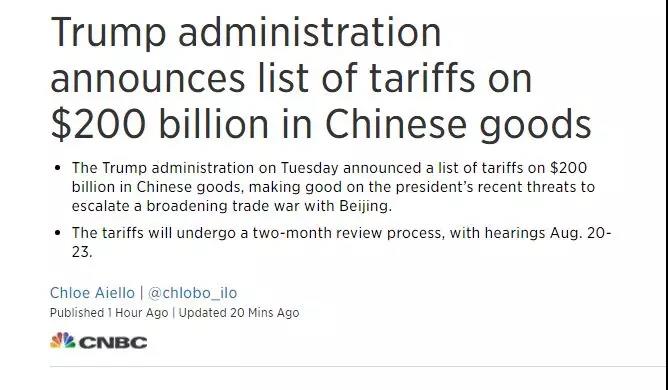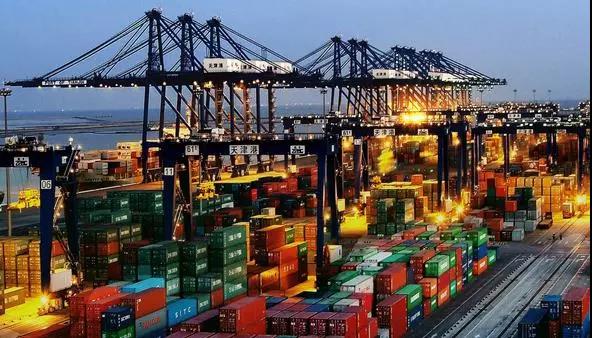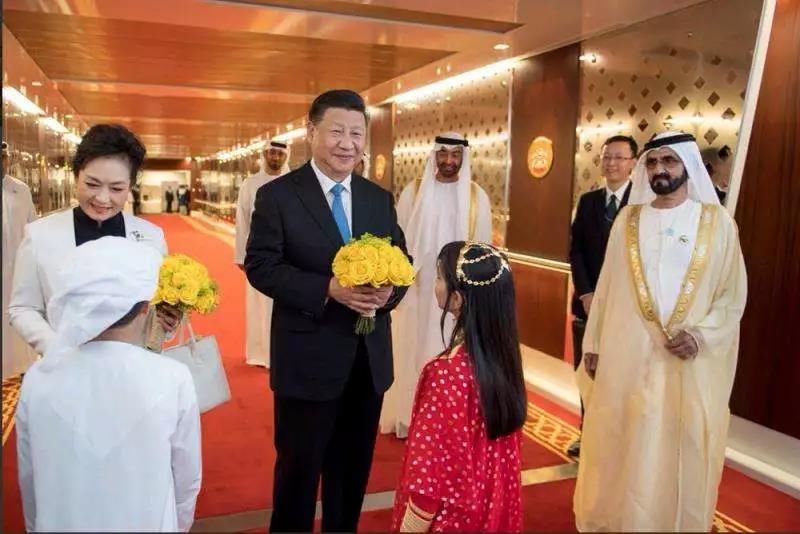Recently, The relationship between China and the United States seems to have a bit of 'gunpowder smell'. The friction between China and the United States is increasing.
A war without smoke has started.
Policy review
U.S. Announces Taxation List of 200 billion Dollars of Goods to China
The US trade representative said that the United States will impose a 10% tariff on these Chinese imports.
Among them, taxable products include hundreds of foods as well as consumer electronics such as cigarettes, coal, chemicals, tires, cat and dog food, and components including televisions.

In addition to the US import tax policy adjustments, Europe's heavy tax burdens, ebay layoffs etc. Which push Europe and North America e-commerce sellers are on the ice.

In this trade war, the most affected group is the small and medium-sized e-commerce platform. The current difficulties faced by small and medium-sized e-commerce platforms, in addition to the weakening of price competitiveness caused by taxation, and the avoidance of related industry service providers: for example, in terms of cross-border logistics, the US space is becoming more and more tight, and some shipping companies are also affected by this that they have to withdraw Some routes.Of course,they may be affected by policy changes from overseas e-commerce platforms, and product resistance in the target consumer market.
Then, after the price has become the core of competition for cross-border e-commerce, where is the future of cross-border e-commerce?
Challenge: Do differentiated products
For the mature e-commerce market, the main problem that most Chinese sellers facing is not the consumption tax, but the establishment of their own dominant category under the dazzling range of commodities.

Product development capabilities based on deep insight into consumer demand are the next weapon for Chinese sellers to compete in the global marketplace. China has relatively perfect supply chain and production capabilities. We used to rely on price advantage to seize the market. Next, Chinese sellers must return to the product itself, deeply understand customer needs, and rapidly develop and design cost-effective products. It is quickly brought to market through online and offline, so that it can win the favor of consumers and eventually have a place in the market.
Opportunity: The rise of emerging markets, fully seize the blue ocean market
At present, although the mainstream market position of cross-border e-commerce is still in Europe and the United States, but from the perspective of global development trends, emerging markets are emerging.Under the “Belt and Road” policy, emerging e-commerce markets such as the Middle East and Africa are gradually growing. The future growth space is worth looking forward to, especially in the Middle East, where the manufacturing industry is underdeveloped and the consumption power is strong.it is the main battleground for many export companies.

The data shows that the total population of the Middle East is about 315 million, the Internet penetration rate is 60%, while the UAE country is over 90%, and e-commerce retail sales account for 2% of total retail sales which is far below the world average of 10%. It is estimated that in the next five years, the growth rate of e-commerce in the Middle East will reach more than 30%, and the e-commerce transaction volume is expected to be 18 billion U.S. dollars in 2018.
Policy: China-Africa trade welcomes policy
As the model of diversified economic development in the Middle East, the United Arab Emirates has been actively exploring and expanding new areas of cooperation. On July 20, 2018, China and the UAE signed the 'Memorandum of Understanding on E-commerce Cooperation between the Ministry of Commerce of the People's Republic of China and the Ministry of Economic Affairs of the United Arab Emirates' in an effort to jointly promote the sustained and stable development of bilateral trade.

According to the memorandum, China and Arab countries will establish an e-commerce cooperation mechanism to jointly create a good development environment for e-commerce. Regularly conduct government-level dialogues, promote public-private dialogue, conduct joint research, and support enterprises in the two countries to carry out e-commerce project cooperation, including promoting the trade of high-quality specialty products in their respective countries through e-commerce, and exploiting e-commerce to open up new channels and new fields of China-Arab economic and trade cooperation. To continuously improve the level of trade facilitation and cooperation between the two countries and promote the sustained and stable development of bilateral trade.
Logistics: Preparing for the Middle East, CITITRANS is empowering cross-border e-commerce exports
Relying on the great potential for consumption and favorable government policies which has driven the development of cross-border e-commerce from China to the Middle East. However, many exporters are limited by the restrictions on religion, local consumption habits, taxation and customs clearance policies. At this time, it is very important to choose a localized professional logistics team, which can solve all problems of sales channels, transportation clearance and delivery in one stop.

After more than ten years of accumulation in the Middle East, CITITRANS has taken the lead in traditional logistics, and its customs clearance rate has been ranked first for many years, with absolute market advantage. Combining the characteristics of the Middle East market, the company is fully developing e-commerce logistics, and has established e-commerce overseas warehouses and floor-to-home facilities in the UAE and Saudi Arabia. The cooperative service customers include Jollychic, Clubfactor, Shein, Funmart, Global Easy, Lanting Market and other e-commerce providers.
Due to the high penetration rate of the Internet, residents in the Middle East have frequent cross-border online shopping behaviors, especially in local oil-producing countries. The lack of materials but wealth is also enthusiasm for online shopping. China’s cross-border e-commerce sellers only need to use With this enthusiasm, that you will be able to do much in the Middle East market.